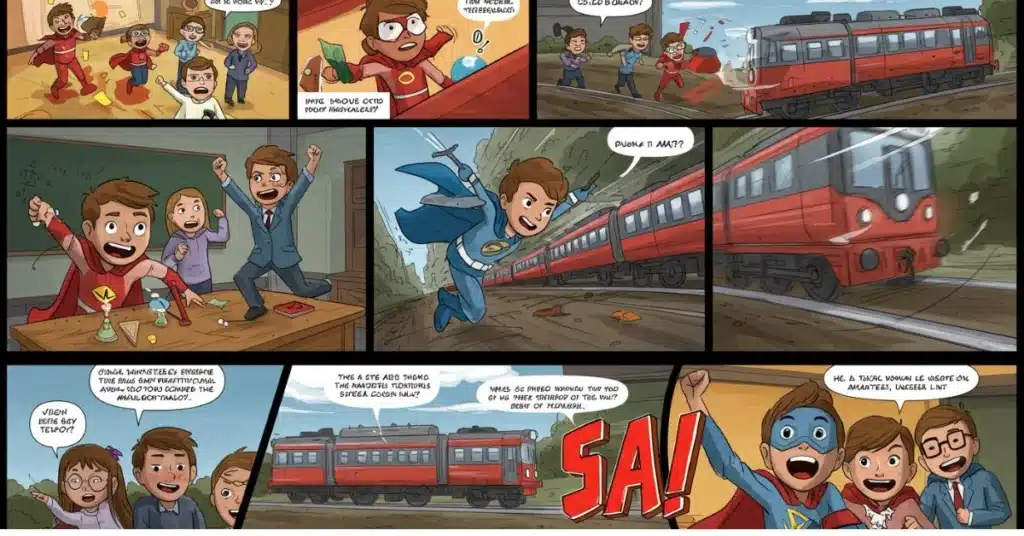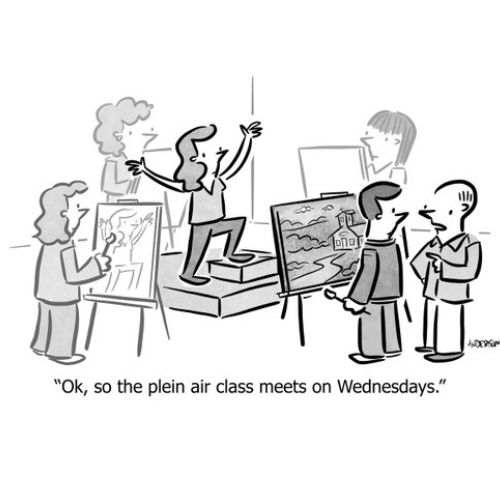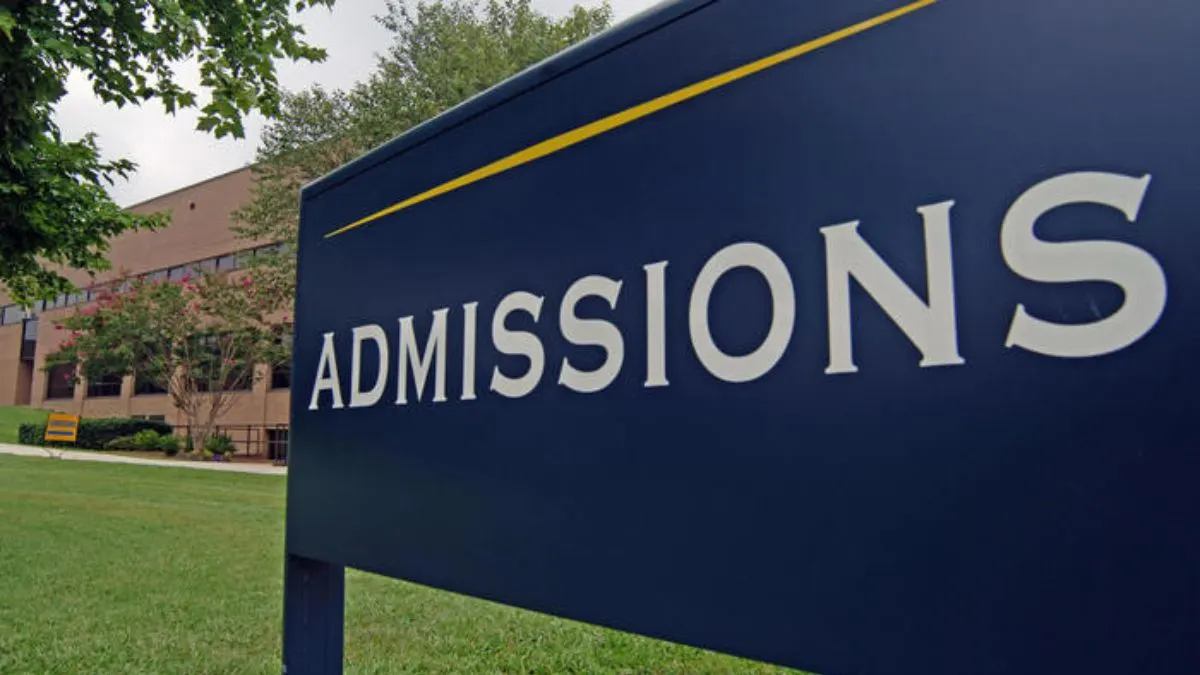Table of Contents
Educational School Cartoon Comics: Where Learning Meets Fun
Have you ever wondered if a comic strip could do more than just make you laugh?
Welcome to the world of educational school cartoon comics—where storytelling and visual creativity meet classroom instruction. These comics aren’t just about superheroes; they’re a smart, effective tool to help students absorb knowledge, simplify difficult topics, and enjoy the learning process.
In this comprehensive guide, we’ll explore the origins, benefits, types, and future of educational comics—and even show you how to create your own.
The Evolution of Educational School Cartoon Comics
Cartoon comics have been part of education since the early 1900s. Originally seen as mere entertainment for children, educators soon realized their power to explain, illustrate, and engage.
By the mid-20th century, educational comics started appearing in science and history lessons—breaking down difficult concepts with visuals and simplified language. Today, they’ve evolved into a powerful multimedia teaching tool, powered by interactive platforms and visual storytelling.
Why Use Cartoon Comics in the Classroom?
Let’s explore the key benefits that make educational comics an asset for both teachers and students:
1. Visual Engagement
Students are naturally drawn to colorful characters and panels. Comics demand attention, making learning feel like an adventure—not a chore.
2. Simplification of Complex Topics
From algebra to the French Revolution, comics break down abstract or dense ideas into easy-to-understand stories and visuals.
3. Better Memory Retention
Studies show that combining images with text helps students remember more. Comics create a dual coding effect—text plus visuals—that sticks.
You may also like:
How to Teach Effectively in School
Types of Educational School Cartoon Comics
Educational comics come in all formats. Here are the most common and effective types:
Science and Math Comics
Turn theories into thrilling adventures. Imagine a superhero using geometry to escape a villain’s trap or a robot explaining DNA with humor.
History and Social Studies Comics
Bring the past to life with narratives about real historical figures, cultural events, and ethical dilemmas.
Language and Literature Comics
Reimagine Shakespeare, teach grammar rules through characters, or help ESL students build vocabulary using storytelling.
How Cartoon Comics Improve the Learning Process
Visual Learning Styles
Many students are visual learners. Comics leverage that, making abstract lessons more concrete and relatable.
Critical Thinking Promotion
Well-written comics pose dilemmas and open-ended questions that require reflection, analysis, and decision-making.
Interactive Learning
Modern educational comics often include quizzes, challenges, or discussion prompts, turning readers into participants.
Popular Educational School Cartoon Comics
Several series have made waves in classrooms worldwide:
- Science Ninja—Simplifies science concepts through action-packed stories.
- History Heroes—Retells global history with wit and accuracy.
- Math Marvels—Introduces arithmetic, fractions, and logic puzzles through comic missions.
Case Study: A school using Math Marvels saw a 30% improvement in student math scores over two terms.
How to Create Your Educational Comic
Want to craft your educational cartoon comic? Follow this simple framework:
Step-by-Step Guide:
- Pick a Topic
- Choose a subject aligned with educational goals (math, grammar, history, etc.).
- Build a Storyline
- Create a simple narrative around the concept. Include problems and resolutions.
- Design Characters
- Use relatable, age-appropriate characters that resonate with students.
- Write the Script
- Keep it fun, informative, and easy to understand.
- Use Tools to Draw or Design
- Platforms like Pixton, StoryboardThat, or Canva make comic creation easy.
- Review and Test
- Check the accuracy and appeal. Test with a small group of students or peers.
You may also like:
School College News: Staying Informed and Connected
Recommended Tools for Comic Creation
| Tool | Features |
|---|---|
| Storyboard That | Templates, drag-and-drop characters |
| Pixton | Classroom management, character creator |
| ToonDoo | Quick comic creation for kids |
| Canva | Custom comic panels, flexible layouts |
How Teachers Can Use Comics in the Classroom
Integration Tips
- Use comics as supplemental reading or lesson openers.
- Assign students to create their comics based on lessons.
- Use comic scenarios as conversation starters or for group activities.
Aligning with Curriculum Standards
Ensure the comics meet your syllabus outcomes. For example, if teaching renewable energy, the comic should highlight key scientific principles and include real-world applications.
Challenges and Misconceptions
Misconception: “Comics aren’t serious learning tools.”
Wrong. Studies show they boost retention and engagement—especially for struggling readers.
Balancing Entertainment and Education
The best comics entertain and educate. Don’t sacrifice substance for fun.
Case Studies: Real Impact of Educational Comics
Example 1
A New York middle school integrated comics into its history curriculum. Result: A 25% increase in student participation and improved test scores.
Example 2
In Canada, science comics helped students understand complex genetics. Teachers reported higher comprehension during assessments.

Digital vs. Print Comics: Which Is Better?
| Format | Pros | Cons |
|---|---|---|
| Digital Comics | Interactive, easy to share, includes media | Needs devices, screen time |
| Print Comics | Tactile, easy annotation, no tech needed | Less interactive, harder to update |
Use both formats based on classroom needs and student preferences.
Future of Educational School Comics
Trends to Watch
- Augmented Reality (AR) Comics
Turn printed pages into animated, interactive learning experiences. - Gamified Comics
Include challenges, story-based learning paths, and rewards. - Multilingual Comics
Help ESL learners through visual translation and contextual storytelling.
The Role of Technology
Expect AI tools, immersive VR comics, and student-personalized learning experiences to shape the next generation of comic-based learning.
Frequently Asked Questions (FAQs)
1. Can educational comics replace textbooks?
No. They are a valuable supplement, not a substitute. Use them to enhance understanding.
2. Are comics suitable for all age groups?
Yes. They can be adapted for all levels—from elementary to high school.
3. Is comic creation time-consuming?
Not anymore. Tools like Pixton and StoryboardThat streamline the process.
4. How do I ensure a comic is educational?
Align it with learning outcomes, use real-world examples, and gather peer feedback.
5. Are there free tools to create comics?
Yes. Free tools like MakeBeliefsComix, Canva, and limited versions of Pixton are available.
Final Thoughts
Educational school cartoon comics are no longer just entertainment. They are powerful tools that engage students, simplify complex subjects, and foster a love for learning.
Whether you’re a teacher looking to innovate or a student who learns better visually, educational comics can transform the way knowledge is delivered and retained.



